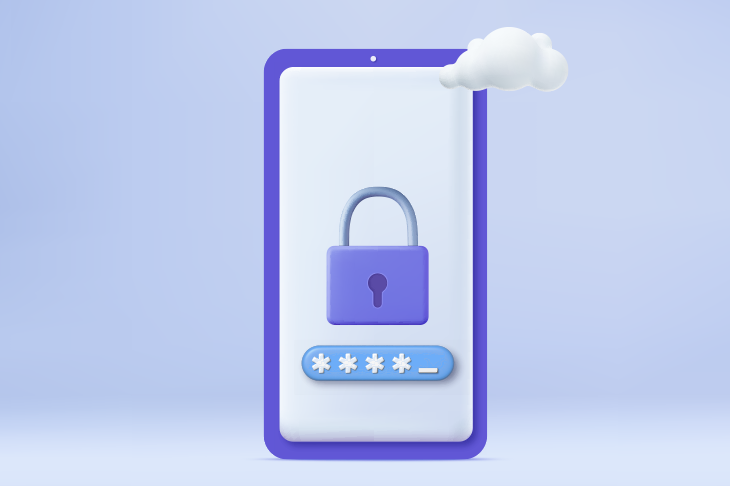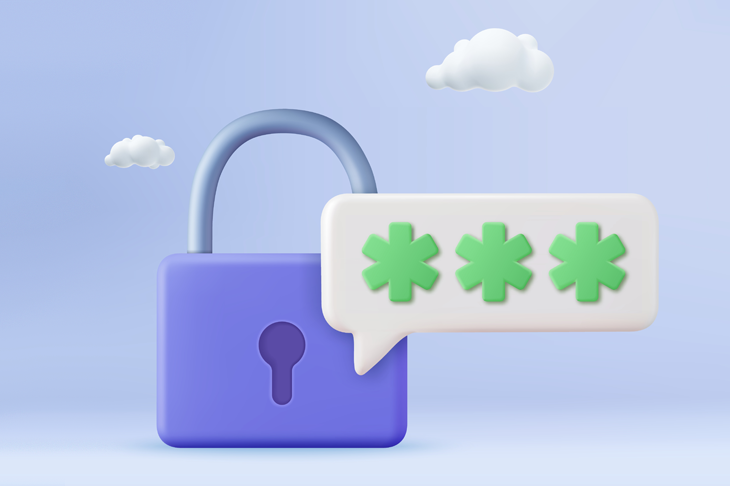OTP adds an extra layer of security to your bank account, email account, or any of your accounts with or without login credentials. So, at Papaki, taking care of your security, we have it enabled for important actions you take through your Control Panel.
But, what exactly is OTP, how does it work, and what are its benefits?
What is an OTP (One-Time Password)?
A one-time password, or OTP, is a numeric password sent to the user’s registered device to authenticate the user’s logging into an account or system. An OTP ensures that the person trying to log into the account or system is the original user, not a hacker trying to bypass someone else’s account.
As the name suggests, this code or one-time password is only valid for a few minutes and used once per login attempt. Their quick expiration ensures that the OTP doesn’t get breached. This OTP can be received as a phone message, phone call, email, authenticator app, or push notification. At Papaki, you receive an OTP code, when it is required, via email.
The OTP benefits
Adds an extra layer of security
Login credentials sometimes fail to provide high security and fall prey to phishing, password leaks, and other cyber-attacks. OTPs, therefore, act as an additional protective layer that is more difficult to break in and provide better authentication.
With OTPs, even if an unauthorized person tries to log in with your login credentials, the code will be sent to the rightful user. This will alert the user that someone is trying to sneak into their account and could either inform the authorities or change their login credentials.
Even businesses and organizations alert the user if a login attempt is detected from an unregistered and unknown device.
OTP is difficult to crack
Unlike passwords, OTPs are randomly generated 4, 6, and 8-digit codes that are impossible to guess.
Cybercriminals have all the time to guess passwords because they are static. Moreover, weak and commonly used passwords are easier to guess.
On the other hand, OTPs are highly unique, and the cyberthief only has a few seconds to guess the numeric code with millions of combinations. Therefore, OTPs, when used with two-factor authentication 2FA (which requires providing a second form of verification, such as an extra code sent to your smartphone, a fingerprint scan, or a security token), offer bulletproof security.
Automates procedures

OTPs are mainly used to reset forgotten passwords and to take important actions/changes in your account. Before OTPs were introduced, the users had to call customer care or IT staff to get their password changed or take important action. This overloaded the IT teams and caused delays in customer service.
With the generation of OTPs, users can now easily change or reset their password using their registered email ID or mobile number. The users also have the advantage of regaining access to their locked accounts without much hassle.
Lessen the risks of replay attacks
Replay attacks are attacks executed by cybercriminals that leave the user vulnerable. We will not go into technical details, because the important thing here is to know that OTP protects you from this kind of attack where the hacker in fact impersonates the user to exort money and more.
However, with OTP authentication, the risks of replay attacks are minimized, as unlike passwords, OTP stays valid for a few seconds only. This leaves minimal time to impersonate the user, making the strategy ineffective.
This is one of the reasons OTPs expire within such a short time. The quicker the expiration time, the higher the security.
Enhances remote access security
OTPs are also crucial for users accessing their accounts from remote locations rather frequently. In such cases, it becomes difficult for the organization to know if the authorized person is accessing the account each time.
In such cases, OTPs act as an additional layer of security. Whenever an account is accessed from a remote location, they notify you that the account is being accessed from an unknown source. For security, an OTP must be entered whenever you access your account or sensitive information from a different location.
OTP everywhere
By reading the above, you will probably realize that OTP is not the first time you have seen it on your Papaki account. OTPs are used for their benefits in:
- digital banking to access your bank account
- e-commerce platforms, before making a payment
- healthcare industries to access data on a patient
- government services for accessing your it returns, password renewal, submitting permit applications, applying for jobs, identification cards, and more
- insurance companies to verify claims and access important documents
- business organizations for employee logins, approvals, accessing confidential information, etc.
In short, OTPs are not only limited to validating a transaction. They are also used in the user registration process, device authentication, identity authentication, logging an account, and resetting a password.
Final Words
We hope you now have a clear picture of OTP and the next time you receive such a code remember how important it is and what “job” does for you within a few seconds!






Join the Discussion